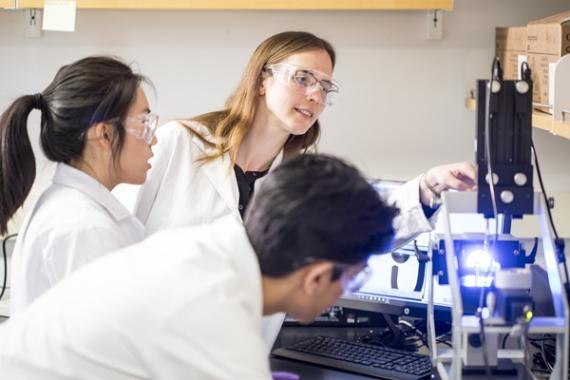A lollipop to test for strep throat. A microfluidic device to enable signaling between cells. A kit for the remote collection of blood-based RNA (ribonucleic acid). These are among the recent innovations from Ashleigh Theberge’s chemistry lab at the University of Washington.
The Theberge Group invents bioanalytical chemistry tools to improve healthcare and advance knowledge of chemical mechanisms in the body. Many of their innovations, like the microfluidic device for cell signaling, are used in their lab. But others are for clinical research outside the lab — a growing focus of their work.
“In the early days, we were getting clinical samples — lung cells from patients with asthma, for example — and putting them into our culture platforms, but it became clear that to answer some of our questions, it would be quite complementary to do more in-depth studies in humans,” says Theberge, associate professor of chemistry in the UW College of Arts & Sciences and co-principal investigator of the lab with Erwin Berthier, UW affiliate associate professor of chemistry.
Continue reading the story featured in UW College of Arts & Sciences News
